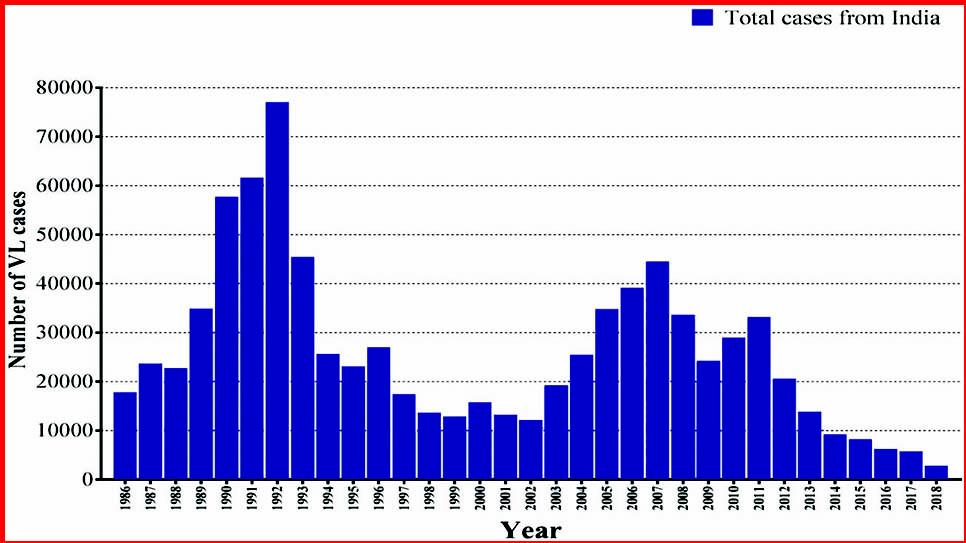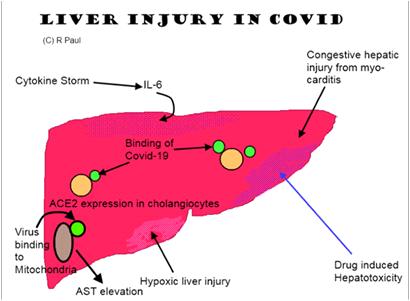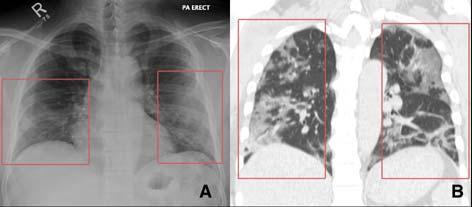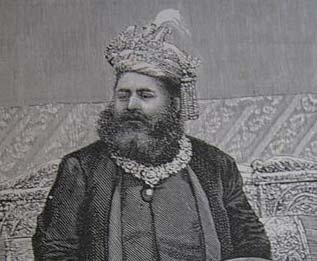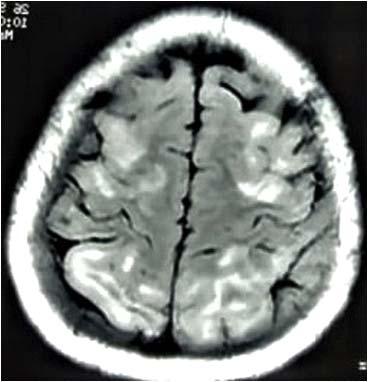
8 minute read
Case Reports
JOURNAL OF THE INDIAN MEDICAL ASSOCIATION, VOL 118, NO 06, JUNE 2020
Case Report Hoffmans’s Syndrome : A Rare and Reversible Neurological Presentation of Hypothyroidism
Advertisement
Aswinraj 1 , Bhaskar Kanti Nath 2 , P Bhattacharjee 3
Thyroid is a vital gland that regulates metabolism growth and many other functions of body. Abnormalities in the functioning of thyroid gland is found in 5-10% of the population of which hypothyroidism is more prevalent. The prevalence of hypothyroidism in India is estimated to be 11% whereas the rate in UK and USA are 2% and 4-6% respectively. 1 The muscular symptoms are quite common in hypothyroidism but they being the predominant symptom possess a major diagnostic challenge as we have to differentiate it from other causes of myopathy. The rare muscular manifestations of hypothyroidism includes – rhabdomyolysis, Hoffman’s syndrome, acute compartment syndrome and Kocher-Debre-Semelaigne syndrome. 2 Hoffman’s syndrome is a pseudo hypertrophic hypothyroid myopathy that is found to be associated with autoimmune thyroiditis. The hallmark presentation is focal or generalized muscle hypertrophy with progressive proximal muscle weakness and muscle pain.
We report the case of a 45 year old male who presented in our Medicine OPD with fatigue, progressive proximal muscle weakness and hypertrophy of bilateral calf muscles. On further work up raised creatine phosphokinase and severe hypothyroidism was found and patient then started on Lthyroxine(100microgram/day) and was kept on regular follow up. After a month of initiation of therapy the patient improved symptomatically and the size of calf muscles reduced and the level of muscle enzyme fell.
Not many cases have been reported in India with pseudo hypertrophic hypothyroid myopathy being the predominant presenting symptom of hypothyroidism. We are reporting the case due to its rarity.
[J Indian Med Assoc 2020; 118(6): 55-7]
Key words : Hoffman’s syndrome, Hypothyroid myopathy, Muscle pseudohypertrophic, Autoimmune thyroiditis.
Hoffman’s syndrome is a rare muscular manifestation of hypothyroidism presenting with progressive proximal muscle weakness, pseudo hypertrophic myopathy, muscle pain, fatigue. The presentation makes it difficult to distinguish from other causes of myopathy. The pathogenesis is not yet fully understood but the proposed mechanisms include alteration in oxidative and glycogenolytic metabolism, neuromediated damage and alterations in the expression of contractile proteins. The case being reported is that of a hypothyroid male who had this rare presentation.
C ASE REPORT
We report the case of a 45 year old male from a remote village in Karimganj, Assam presented to Medicine Outpatient Department with complaints of weakness of bilateral lower limbs, fatigue gradually progressive over a
1 MBBS, Postgraduate Trainee, Department of Medicine, Silchar Medical College & Hospital, Silchar, Assam 788014 and Corresponding Author 2 MBBS, MD, Assistant Professor, Department of Medicine, Silchar Medical College & Hospital, Silchar, Assam 788014 4 MBBS, MD, Professor & Head, Department of Medicine, Silchar Medical College & Hospital, Silchar, Assam 788014
Received on : 08/02/2020 Accepted on : 02/03/2020 Editor's Comment :
Patients with hypothyroidism may present with
different neurological manifestations.
Hoffman’s syndrome is a rare but very important
presentation of hypothyroidism with very good prognosis if diagnosed at an early stage.
period of 6 months. He complained of difficulty in getting up from squatting posture and climbing the stairs. Other complaints included muscular cramps, muscle pain and stiffness. He gave no history of bowel or bladder involvement. No history of diabetes, hypertension or any other chronic illness in the past. No history of any long standing drug intake was obtained.
Examinations — On examination, he was conscious, alert, moderately built and nourished. His general examination showed mild pallor and mild pedal edema. Oral examination revealed presence of macroglossia. No thyroid swelling was found. His pulse rate was 62/minute regular rhythm, blood pressure measured 130/80 mmHg in right arm sitting position. His nervous system examination revealed proximal muscle weakness in bilateral lower limbs with power of grade IV. His bilateral calf muscle was
55
JOURNAL OF THE INDIAN MEDICAL ASSOCIATION, VOL 118, NO 06, JUNE 2020
hypertrophied without any allied tenderness . No hypertrophy was noted in thighs, arms or any other muscle groups. While eliciting deep tendon reflex, the classic delayed relaxation of bilateral ankle joints was found. His cardiovascular and respiratory systems examination were within normal limits (Fig 1).
His laboratory work up showed a raised TSH level of > 100 uIU/ml ( Normal range – 0.3-5.5uIU/ml ) and an elevated muscle enzyme level; his serum creatine phosphokinase (CPK) being 1060 U/L ( Normal - <170 U/L). His Anti- TPO antibody screen was positive. The serum LDH was slightly raised at a level of 245 U/L ( Normal- 90-185 U/L). His CBC report showed mild anemia (Hb- 9.2g/dl). Random blood sugar( RBS- 82mg/dl) and liver function tests were within normal range. His blood urea and creatinine reports were normal. Urine routine examinations was normal and no evidence of myoglobinuria was found. Fasting lipid profile test showed hypercholesterolemia (245mg/dl) and hypertriglyceridemia (190 mg /dl) . His ECG read normal sinus rhythm with low voltage complex.
On the basis of his history, examination and laboratory workupa diagnosis of Hoffman’s syndrome was made. The patient was started on levothyroxine at an initial dose of 100ug one tablet once daily before breakfast and atorvastatin 20mg one tablet once at bedtime. The patient was kept on a regular followup.
A month after diagnosis and initiation of treatment his symptoms reduced, the calf muscle pseudohypertrophy regressed and the level of TSH (6.2uIU/ml) and muscle enzyme CPK (320U/l ) reduced from the prior one.
D ISCUSSION
The neurological manifestation of hypothyroidism usually occur after clinical impairment of other systems hence its unusual to see it as an initial presentation. 3 The symptoms related to hypothyroid myopathy are commonly muscular cramps, weakness, myalgia, hyporeflexia and myxedema. 4 There are different clinical presentation of hypothyroid myopathy: 5 1. Muscular hypertrophy with bradykinesia and weakness (Kocher-Debre-Semelaigne syndrome) 2. Muscular hypertrophy with a proximal muscle weakness, post exercise stiffness, painful spasm, delayed tendon jerk relaxation and pseudomyotonia. (Hoffman’s syndrome) 3. A rare atrophic myopathy 4. Myasthenic syndrome with poor response to edrophonium
The disease was first described in 1897 by Hoffman.
The laboratory investigation often shows an increased level of muscular enzyme. Gianpietro et al in a study to determine the most sensitive enzyme in myopathy found that CPK was elevated in about 60% cases thus showing that the enzyme is the best biochemical marker for
Fig 1 — Bilateral calf muscle hypertrophy
investigating a myopathy. 6 The level of CPK does not correlate with clinical picture of hypothyroidism and a symptomatic patient may have normal CPK level and even the opposite holds true. 6 The reduction in enzyme levels with treatment occurs over variable time period ranging from weeks, months or even years. 6,7
Electrophysiological study shows different patterns –neurogenic, myogenic , mixed or even a normal pattern. In a study done by Cruz et al among 16 patients of primary hypothyroidism electrophysiological abnormalities were found in 87.5% patients and myopathic pattern in 46.6% and neuropathic pattern in 43.7%. 8
The reason for pseudohypertrophy of muscle remain unclear but the mechanism being postulated is an increase in connective tissue and an increased size and number of muscle fibres. 4 On microscopic examination the changes found are – necrosis , atrophy, muscle fibers hypertrophy , increased number of nucleus, increased glycogen deposits, increased ring shaped fibers and connective tissue. 9
The treatment comprise of synthetic thyroid hormone in the form of thyroxine the dosage being 100-200ug/dl. The patients particularly the elderly should be evaluated for cardiovascular risk factors prior to initiation of therapy as it increases the chance of acute coronary insufficiency. In some patients it is observed that the symptoms worsens in the beginning of treatment probably due to a raised metabolic demand induced by the initiation of thyroxine. In such cases an additional corticotherapy during some period of treatment is recommended for its membrane stabilizing effect. 10
In conclusion, hypothyroidism is a very common endocrine disease and clinicians should be aware of its unusual presentations. Hoffman’s syndrome represent
56
JOURNAL OF THE INDIAN MEDICAL ASSOCIATION, VOL 118, NO 06, JUNE 2020
those few form of myopathy that entirely reverse on timely intervention and hence has a good result.
R EFERENCES
1 Bagcchi S — Hypothyroidism in India: more to be done. The
Lancet Diabetes & Endocrinology 2014; 2(10): 778. 2 Sindoni A, Rodolico C, Pappalardo MA, Portaro S, Benvenga
S — Hypothyroid myopathy: a peculiar clinical presentation of thyroid failure. Review of the literature. Reviews in
Endocrine and Metabolic Disorders 2016; 17(4): 499-519. 3 Vasconcellos LF, Peixoto MC, Oliveira TN, Penque G, Leite AC — Hoffman’s syndrome: pseudohypertrophic myopathy as initial manifestation of hypothyroidism. Case report. Arquivos de neuro-psiquiatria 2003; 61(3B): 851-4. 4 Ono S, Inouye K, Mannen T. Myopathology of hypothyroid myopathy: some new observations — Journal of the
Neurological Sciences 1987; 77(2-3): 237-48. 5 McKeran RO, Slavin G, Ward P, Paul E, Mair WG — Hypothyroid myopathy. A clinical and pathologaical study. The Journal of
Pathology 1980; 132(1): 35-54. 6 Giampietro O, Clerico A, Buzzigoli G, Del Chicca MG, Boni C,
Carpi A — Detection of Hypothyroid Myopathy by
Measurement of Various Serum Muscle Markers–Myoglobin,
Creatine Kinase, Lactate Dehydrogenase and Their
Isoenzymes. Hormone Research in Paediatrics 1984; 19(4): 232-42. 7 Torres CF, Moxley RT — Hypothyroid neuropathy and myopathy: clinical and electrodiagnostic longitudinal findings.
Journal of Neurology 1990; 237(4): 271-4. 8 Cruz MW, Tendrich M, Vaisman M, Novis SA —
Electroneuromyography and neuromuscular findings in 16 primary hypothyroidism patients. Arquivos de Neuropsiquiatria 1996; 54(1): 12-8. 9 Anagnos A, Ruff RL, Kaminski HJ — Endocrine
Neuromyopathies. Neurologic Clinics 1997; 15(3): 673-96.
Neurological Presentations of Hypothyroidism :
Carpal tunnel syndrome and other entrapment neuropathies are common in hypothyroidism. There is impairment of muscle function with cramps stiffness & pain. There may be slow relaxation of deep tendon reflexes & pseudomyotonia. Memory and concentration are often impaired. Myopathy is one of the most common neurological manifestations of both hypothyroidism & hyperthyroidism. But Creatine kinase is elevated only in hypothyroid cases. Rare neurological presentations are dementia, psychosis, reversible cerebellar ataxia & Hashimoto encephalitis.
57

